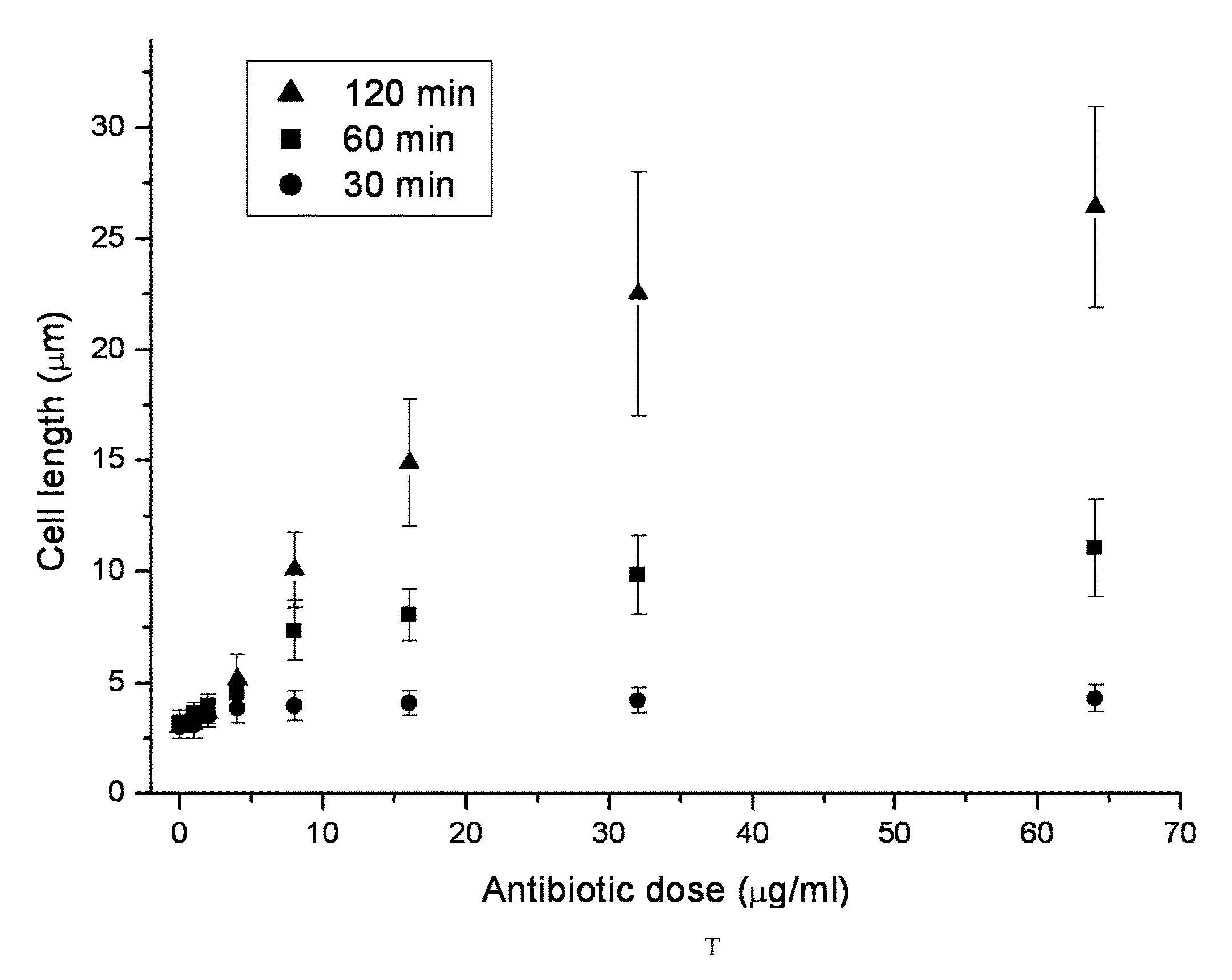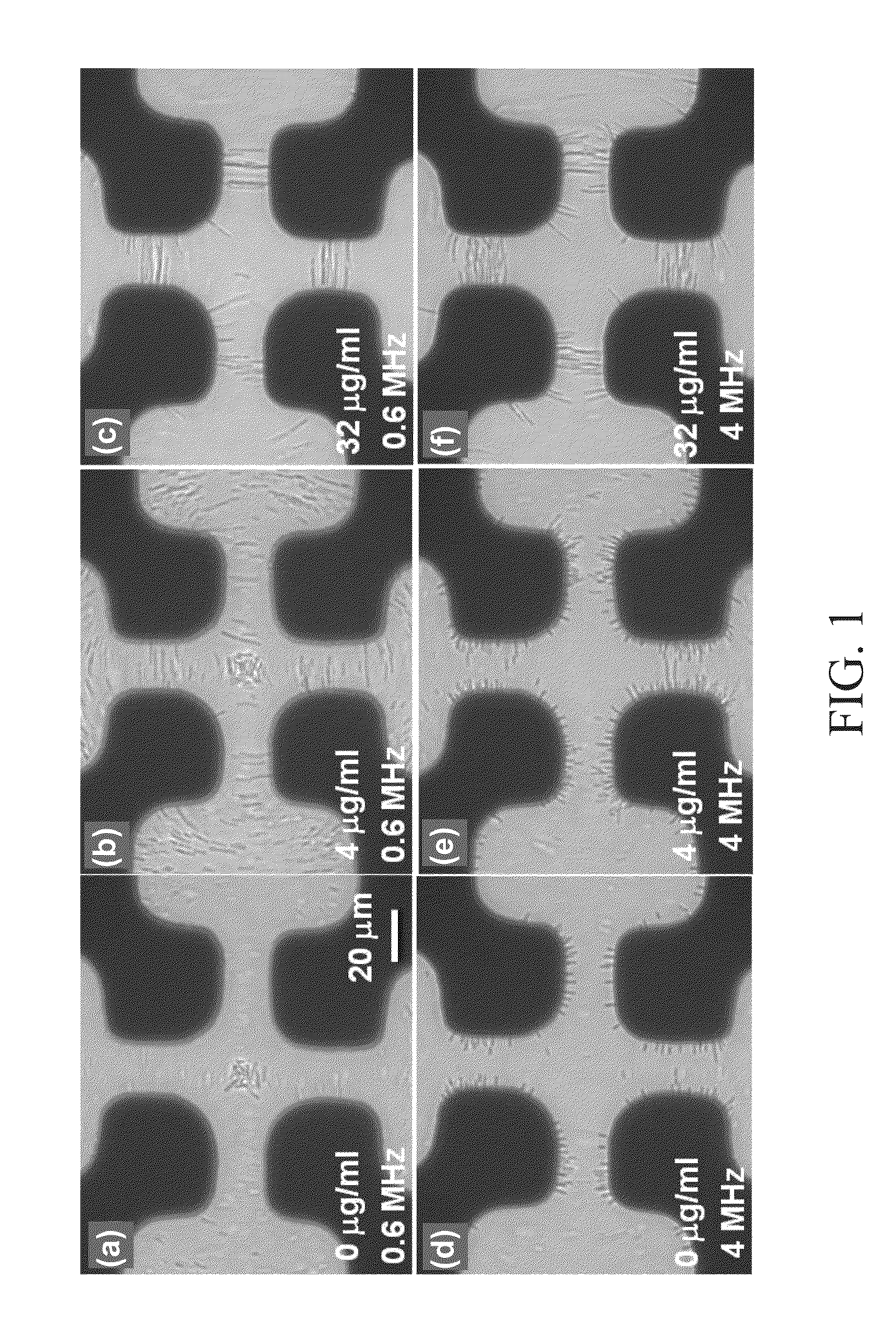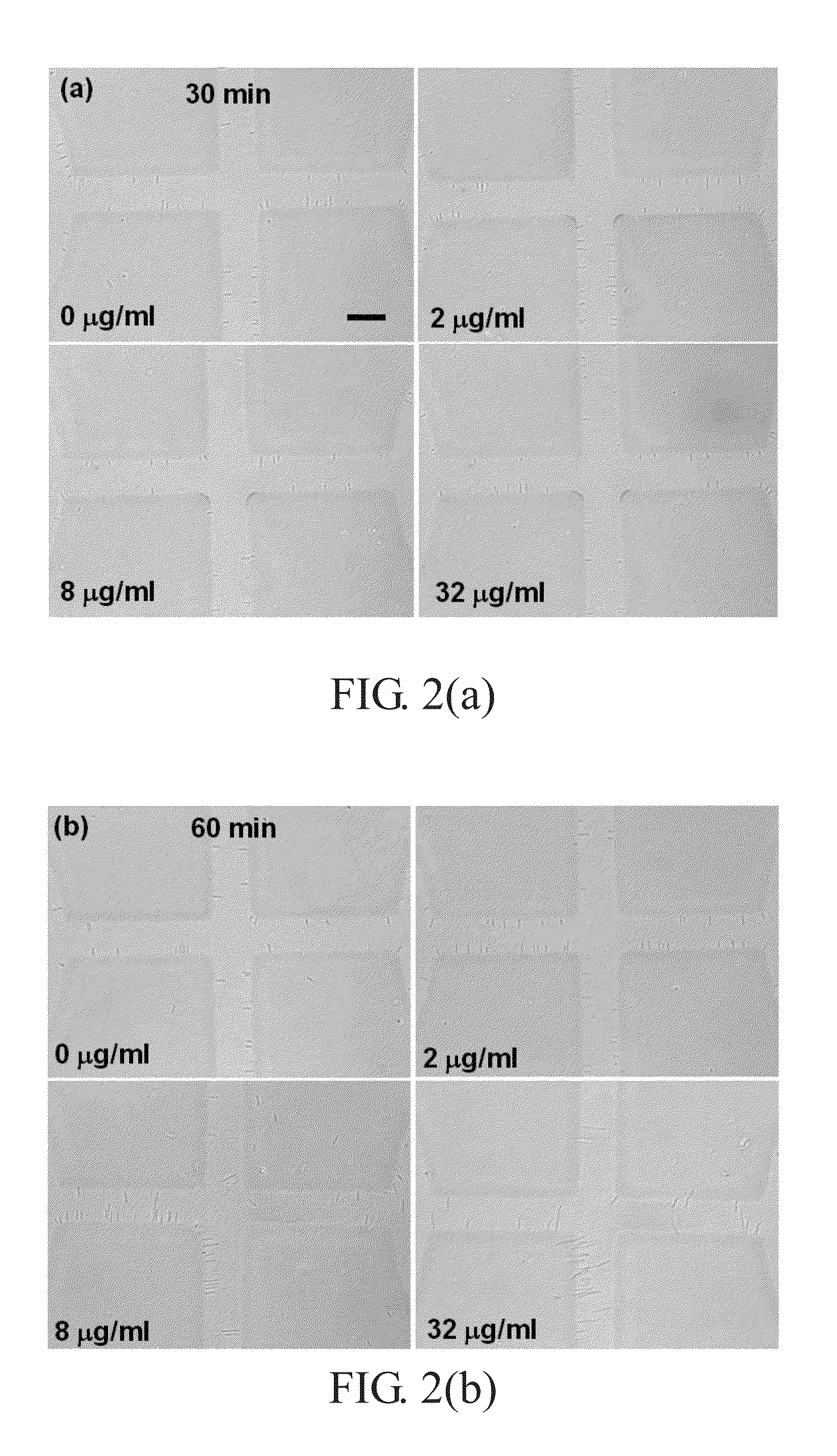Method for antibiotic susceptibility testing and determining minimum inhibitory concentration of the antibiotic
a susceptibility testing and antibiotic technology, applied in the direction of fluid pressure measurement, liquid/fluent solid measurement, peptides, etc., can solve the problem of not being able to serve as a basis for the regulation of antibiotic dose, culturing the microorganism needs even more time, and conventional optical measurement is often too slow to resolve critical situations, etc. problems, to achieve the effect of reducing the probability of pathogens having drug resistance, reducing the duration of inspection, and reducing the probability of pathogen
- Summary
- Abstract
- Description
- Claims
- Application Information
AI Technical Summary
Benefits of technology
Problems solved by technology
Method used
Image
Examples
preparation example 1
[0035]Glass slides were used as substrates. Metal films were deposited on the glass slides by physical vapor deposition (PVD). In detail, Cr (50 nm) as an adhesive layer and then Au (200 nm) as a conductive layer were deposited on a glass slide by E-beam VT1-10CE (ULVAC).
[0036]After deposition of the metal films, a photoresist layer was formed on the metal films by standard photolithography, exposed with a mask having a predetermined pattern, and then developed to form the predetermined pattern. Subsequently, the pattern of the photoresist was transferred to the metal films by wet etching and then the photoresist was removed. Finally, patterned metal films were made to serve as a microelectrode array of a chip. Hence, the chip was obtained. In the chip, microelectrodes were separated by a distance of 20 μm and made in a width of 50 μm.
preparation example 2
[0037]The present example was the same as the manner of Preparation Example 1 except that the microelectrodes were made of transparent Indium tin oxide (ITO).
example 1
[0038]Phosphate-buffered saline (PBS) containing 137 mM NaCl, 2.7 mM KCl, 4.3 mM Na2HPO4, and 1.47 mM KH2PO4 at pH 7.4 was prepared. An oral β-lactam antibiotic, cephalexin (Sigma, USA), which generally is used in the treatment of urinary tract infection (UTI), was dissolved in 1×PBS and prepared into a stock concentration of 1024 μg / mL. This stock concentration was diluted with trypticase soy broth (TBS) into 4 μg / mL and 32 μg / mL. Hence, TBS culture media with the antibiotic at different concentrations were made.
[0039]Among different cell lines of Escherichia coli causing urinary infection, E. coli ATCC 25922 was selected and cultured with TBS under shaking at 37° C. Then, the bacterial concentration of the culture suspensions was adjusted to 1.5×106 cells / ml by a densitometer (VITEK 2, BioMérieux).
[0040]The bacterial suspension (100 μl) and TBS culture media (containing the antibiotic at different concentrations, 900 μl) were mixed (1.5×106 cells / ml) and incubated at 37° C. in a s...
PUM
| Property | Measurement | Unit |
|---|---|---|
| concentrations | aaaaa | aaaaa |
| concentrations | aaaaa | aaaaa |
| concentrations | aaaaa | aaaaa |
Abstract
Description
Claims
Application Information
 Login to View More
Login to View More - R&D
- Intellectual Property
- Life Sciences
- Materials
- Tech Scout
- Unparalleled Data Quality
- Higher Quality Content
- 60% Fewer Hallucinations
Browse by: Latest US Patents, China's latest patents, Technical Efficacy Thesaurus, Application Domain, Technology Topic, Popular Technical Reports.
© 2025 PatSnap. All rights reserved.Legal|Privacy policy|Modern Slavery Act Transparency Statement|Sitemap|About US| Contact US: help@patsnap.com



